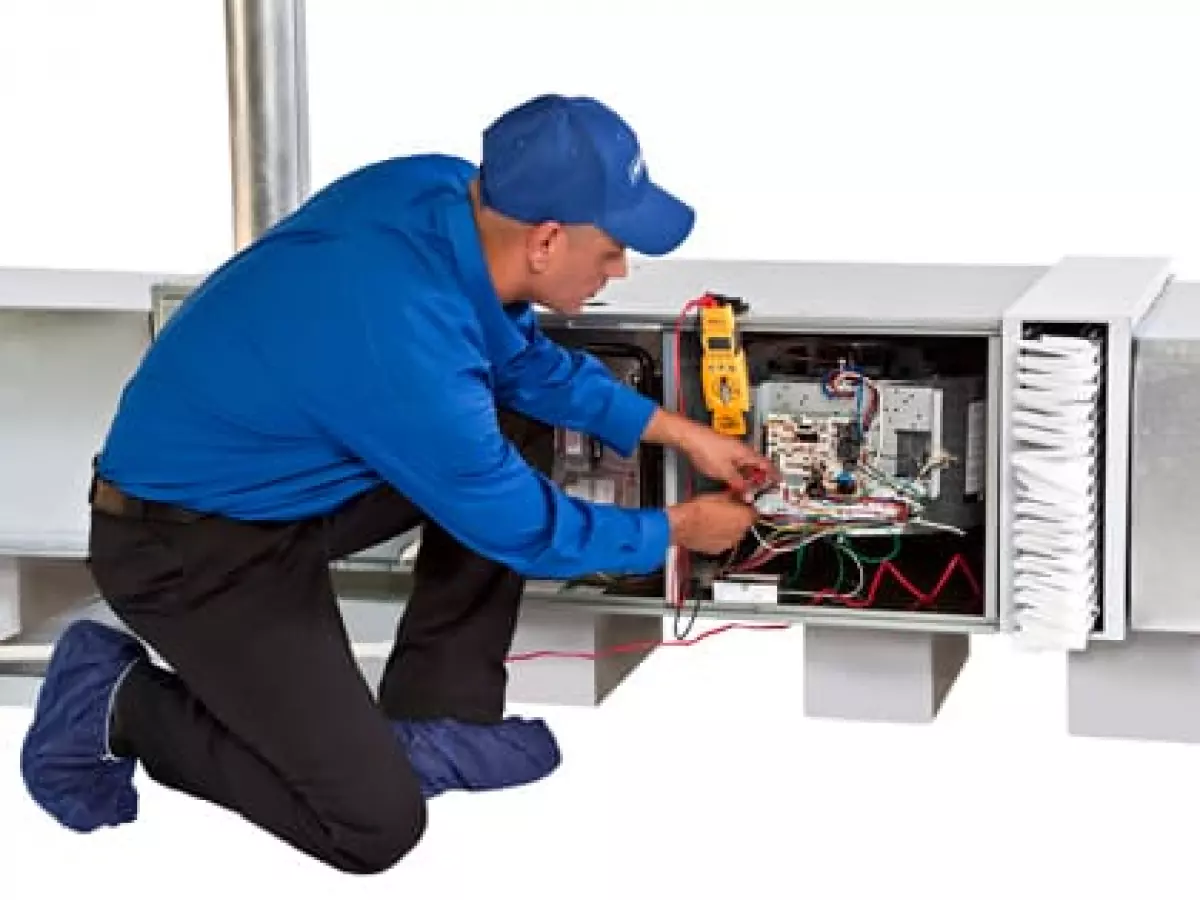
Since the 1970s, central air conditioning systems have become increasingly popular in American homes, providing comfort and convenience with a single thermostat control. These systems consist of various components that work together to produce cool, dry air for optimal home comfort on hot days. By understanding how each part operates and being able to identify potential issues, you can maintain your central air conditioning system for better performance year after year.
Condenser Unit
Central air conditioning systems consist of two main components: an outdoor condenser and an indoor evaporator. The outdoor condenser is enclosed in a metal cabinet with slats, known as fins, which are designed to direct airflow. Typically, the condenser is located on a concrete pad next to your home, but it may also be situated on the roof. When the evaporator removes heat from indoor air, it is absorbed by a refrigerant that is then sent to the condenser. At the condenser, the heat is radiated away into the outdoor air. After releasing its heat, the refrigerant is pumped back into your home to begin the cooling process again. To ensure the proper functioning of your condenser, it is important to clear the area around it of debris and maintain at least three feet of clearance in all directions. You can clean the condenser yourself using a hose or have your HVAC technician perform this task during regular air conditioning maintenance visits.
Evaporator Unit
Within your home, the air conditioner's evaporator unit draws air across the evaporator coil. This coil contains the refrigerant, which absorbs heat from the air to cool it down. Once the air has been cooled, it is blown through the ducts by an air handler. If you have a central furnace installed, the air conditioner and furnace will share the same electric air handler system. Your HVAC technician should clean the evaporator unit during maintenance visits. Additionally, regularly changing the air filter in your air conditioner's intake will help keep the system free of dust and dirt, while also reducing strain on the blower motor by improving airflow.
Ductwork
Ductwork is used in central air conditioning systems to distribute cooled air throughout your home. The cooled air is blown into a central duct by the air handler, which then branches out into each conditioned space. The ducts terminate in air registers, which are equipped with adjustable grilles that can be opened or closed to regulate airflow. You can keep your air registers clean by using the hose attachment of your vacuum cleaner. Be sure not to block the registers with furniture or other items, and avoid closing too many registers simultaneously as this can put strain on the air handler.
Thermostat
The thermostat serves as the control center for your home's central cooling system. It prompts your air conditioner to run based on the temperature setting you select, continuously comparing your desired temperature with the actual temperature in your home. To ensure accurate temperature readings, place your thermostat in a shaded area away from any air registers that might affect its reading. If you notice that your air conditioning system runs excessively or infrequently, there may be an issue with your thermostat.
Caring for your home's central air conditioning system involves adopting smart cooling practices and scheduling regular professional tune-ups to maximize the efficiency of your AC unit. You can book your annual spring air conditioning tune-up with the experts at ARS by scheduling an appointment online. Remember, maintaining your central air conditioning system will ensure its long-term performance and your year-round comfort.

















